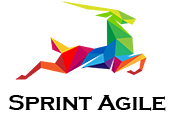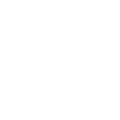
What are the roles and responsibilities defined by SAFe Agile?
What is the list of meetings in Scaled Agile Framework?
What are some of the artefacts produced or delivered by various levels of SAFe?
What ceremonies various agile teams do in SAFe?
Scaled Agile Framework® is quite a comprehensive framework addressing various levels of organisations. SAFe® is a huge toolbox that you can use to address your organisational needs. It includes constructs that are fit for purpose for various contexts. Some critics say the size and complexity of SAFe is one of its disadvantages. In this article I attempt to create a list that summarises the roles, artefact, and ceremonies of Scaled Agile Framework.
Being framework it means you can pick and choose what is fit for purpose in your specific context. Obviously, there are other roles in organisations that are not explicitly defined in SAFe.
By all means this is not an exhaustive list, but a list of most common and important roles, artefacts, and ceremonies. There are other functions that are talked about in safe but no specific role defined for them (e.g. Agile VMO, Lean Agile Centre of Excellence, Lean UX, System Team, CoP, etc.)
Similarly there are ceremonies and artefacts that are described in SAFe but I’ve decided to leave them out to keep this list concise E.g. vision and roadmap, etc.
Here we are only focusing on the core of the framework. We also have roles, ceremonies, and artefacts for the transformation process and DevOps such as value stream mapping which are not identified as part of this document.
Roles
Portfolio level:
Large solution level:
ART (Agile Release Train) level:
Team level:
Ceremonies
Portfolio level:
Large solution:
ART level:
- PI Planning
- System Demo
- Inspect and Adapt workshop
- Art Sync (Coach Sync & PO Sync)
- Preparation for PI Planning
Team level:
Artefacts
Portfolio level:
- Strategic themes
- Portfolio vision (canvas)
- Portfolio epics
- Portfolio enabler epics
- Lean business case
- Portfolio backlog
Large solution:
ART level:
Team level:
Obviously this is only a summary, and to be able to get the most out of your SAFe Agile implementation you will need to explore the entire framework. Artefacts Like product vision and roadmap and other SAFe constructs that are missing from the above list are super important and must not be overlooked in your SAFe implementation.
Please feel free to contact us if you have any questions. At the end of the day SAFe is just another framework and must not be applied as a cookie cutter. You need to engage highly skilled professionals to help you make the best decisions in your context if you’d like to make the most out of your agile transformation.



Comments are closed, but trackbacks and pingbacks are open.